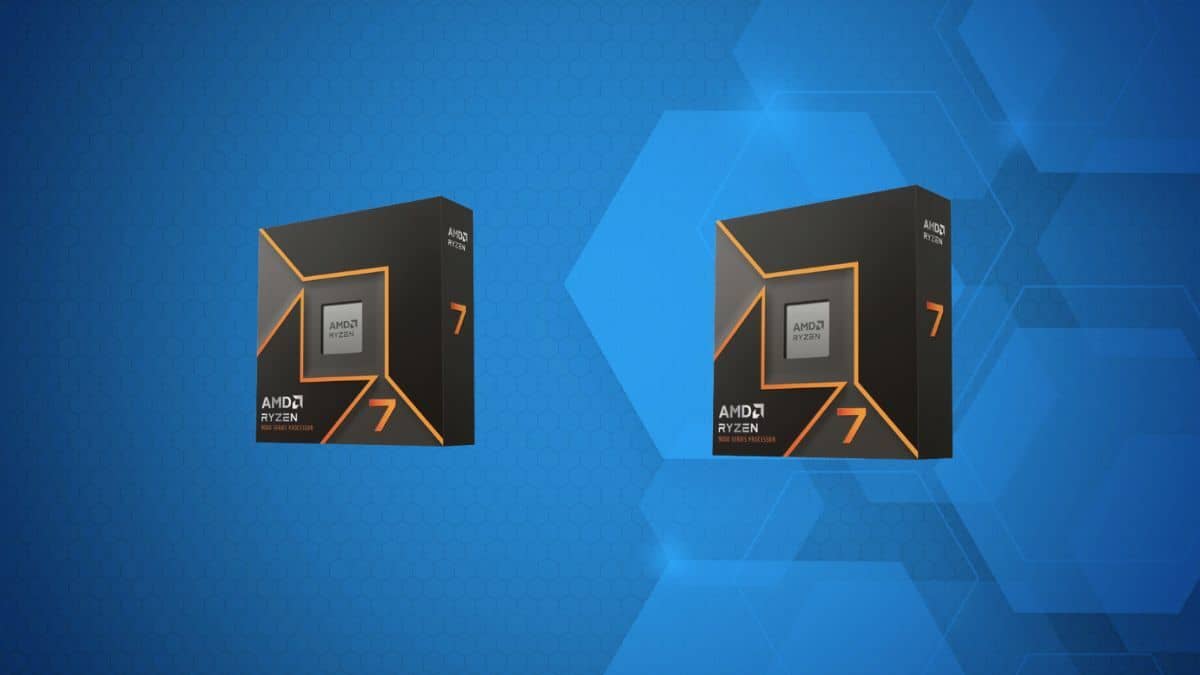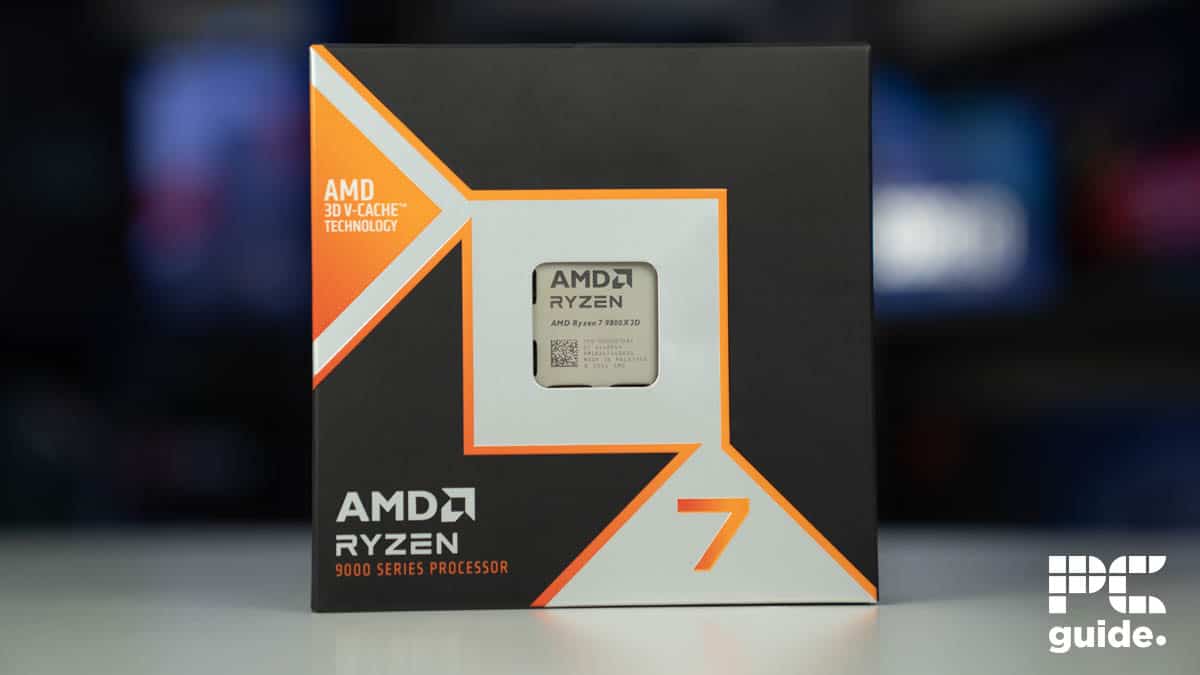Ryzen 7 9800X3D vs 7800X3D – how do they compare?

Table of Contents
The 9000 series launched without the much coveted X3D processors in the lineup, but a couple of months on that has been rectified with the 9800X3D release. We now get to see what AMD has been cooking as it brings its best CPUs for gaming to the latest generation.
So what has been changed between the Zen 4 and 5 versions of the processor? Let’s take a closer look so you can make an informed decision.
Prime Day is finally here! Find all the biggest tech and PC deals below.
- Sapphire 11348-03-20G Pulse AMD Radeon™ RX 9070 XT Was $779 Now $739
- AMD Ryzen 7 7800X3D 8-Core, 16-Thread Desktop Processor Was $449 Now $341
- ASUS RTX™ 5060 OC Edition Graphics Card Was $379 Now $339
- LG 77-Inch Class OLED evo AI 4K C5 Series Smart TV Was $3,696 Now $2,796
- Intel® Core™ i7-14700K New Gaming Desktop Was $320.99 Now $274
- Lexar 2TB NM1090 w/HeatSink SSD PCIe Gen5x4 NVMe M.2 Was $281.97 Now $214.98
- Apple Watch Series 10 GPS + Cellular 42mm case Smartwatch Was $499.99 Now $379.99
- ASUS ROG Strix G16 (2025) 16" FHD, RTX 5060 gaming laptop Was $1,499.99 Now $1,274.99
- Apple iPad mini (A17 Pro): Apple Intelligence Was $499.99 Now $379.99
*Prices and savings subject to change. Click through to get the current prices.
Spec comparison
Here are the main specifications that vary between the two processors.
| Spec | Ryzen 7 9800X3D | Ryzen 7 7800X3D |
|---|---|---|
| Architecture | Zen 5 | Zen 4 |
| Socket | AM5 | AM5 |
| Process | TSMC 4nm FinFET | TSMC 5nm FinFET |
| Cores/Threads | 8/16 | 8/16 |
| Base clock speed | 4.7 GHz | 4.2GHz |
| Boost clock speed | 5.2 GHz | 5GHz |
| L3 cache | 96 MB | 96MB |
| TDP/PPT | 120/162W | 120/162W |
| Integrated graphics | AMD Radeon Graphics | AMD Radeon Graphics |
As the 9800X3D is a newer generation over the 7800X3D, there are in fact some differences to compare. Including some fundamental ones in how the processors are made and how they function. They are still on the same AM5 platform with the same compatibility in motherboards, coolers, and the rest, so here’s a closer look at some of those specifications.
Cores and threads
Both processors are on the same tier in AMD’s lineup for each generation, being that they are Ryzen 7s. That means they feature the same number of cores and threads, 8 and 16 respectively. This would suggest equal performance and capabilities for the most part if all were the same but it’s not quite in the newer generation as we’ll see further on.
Clock speeds
The newer CPU has a slight boost in clock speeds, both the base and boost frequencies have gotten an improvement out of the box. It’s not by much, with the base going up 500MHz and the boost even less with 200MHz.
However, the 9800X3D has a trick up its sleeve, it now can be overclocked, unlike the 7800X3D thanks to the change in how it’s created. With the cache now underneath the CCD, the main processing core is now right below the IHS and cooler. This means with direct contact it can be cooled much more effectively and pushed above its factory clock without the cache getting in the way of its thermal transfer.
Cache
Here it’s the same for the most part as the main L3 cache, the 3D stack has kept the same capacity at 96MB. Apart from of course moving the cache to the bottom of the CPU now, that can provide a boost to performance. The 9800X3D also adds 128MB of L1 cache, the fastest of the options, and might offer a slight improvement over the 7800X3D.
The primary focus is the L3 cache though since it’s the biggest influence as we’ve seen in gaming benchmarks. So with both featuring the same capacity it’s likely to be of similar impact and not that big of a change between the two.
Thermals and power
Another similarity between the two processors is that the TDP is kept the same between the two. Sitting at 120W shows it takes some power to keep it running, even the PPT is kept at 162W. These are just the defaults though, and now the 9000 series can be overclocked, you’ll likely exceed that with the right motherboard and power supply as you can push the processor beyond its limits.
It’ll probably be worth considering the best cooler for the 9800X3D if that’s something you’re looking at doing. As these higher thermals will need to be kept under wraps make sure you’re not causing any thermal throttling.
Price difference
There is a slight increase in price between the 9000 and 7000 series X3D processors, it’s just a $30 uplift but it’s still something to consider. As the launch price has gone from $449 up to $479, that is if you can find them at this price. Especially as checking the 7800X3D on Amazon, it has jumped up to $476 at the time of writing, cutting back the difference between them. Whilst the 9800X3D has seemingly got stock issues from launch so it might take some hunting to get.
Which to get?
Neck and neck it’s easy to say the 9800X3D is the processor to go for, as the reviews of the CPU have shown how well it performs over the competition and is a worthy consideration topping the charts. Thanks to its change in architecture and unlocking its overclocking potential it has plenty more reasons to consider it over the 7800X3D.
However the price and stock might be the biggest factor when considering the two. It might come down to what’s available to you at the time, just be sure not to overpay if you decide to get one. All other factors like the platform and support components will be the same for both.


